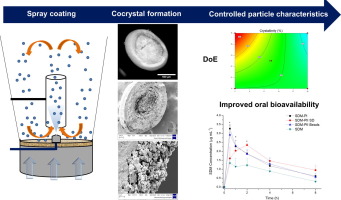- Home
- Blog
- News
- Basics
- Sources
- Agencies, Regulatory & Organisations
- CERSI Excipients Browser
- Excipient Report
- Excipient DMF List
- EXCiPACT Certified Companies
- Excipient Documentation
- Excipient EINECS Numbers
- Excipient E-Numbers
- FDA Inactive Ingredient List
- FDA GRAS Substances (SCOGS) Database
- IPEC Americas
- USP - U.S. Pharmacopeia
- Definitions
- Whitepapers / Publications
- Supplier
- Services
- Media
- Events
- 1st pharmaexcipients Poster Award
- Event Calendar
- Events featured by pharma-excipients
- 4th Annual Formulation & Drug Delivery Congress
- DDF Summit
- ExcipientFest Americas
- ExcipientFest Asia
- Global CompliancePanel
- International Conference and Exhibition on Pharmaceutics & Novel Drug Delivery Systems
- Formulation & Drug Delivery USA Congress
- Laboratory Medicine 2018
- Making Pharmaceuticals Europe
- Making Pharmaceuticals Exhibition
- Pharma Integrates
- PharmaExcipients China @CPhI China
- TTC Technology Training Center
- Jobs
- Online Sourcing
- Contact
09. March 2018
The use of amorphous solid dispersions (ASD) to overcome poor drug solubility has gained interest in the pharmaceutical industry over the past decade. ASDs are challenging to formulate because they are thermodynamically unstable, and the dispersed drugs tend to recrystallize. Until now, most research on ASDs has focused on immediate-release formulations, supersaturation, and stability; only a few studies have recently reported on the manufacturing of sustained-release ASDs.
08. December 2017
Engineering of pharmaceutical cocrystals is an advantageous alternative to salt formation for improving the aqueous solubility of hydrophobic drugs. Although, spray drying is a well-established scale-up technique in the production of cocrystals, several issues can arise such as sublimation or stickiness due to low glass transition temperatures of some organic molecules, making the process very challenging.
26. September 2016
Abstract The synthesis of pectin-silica gels for controlled drug release in gastrointestinal tract (GIT) using low methoxyl (LM) and high methoxy (HM) pectins and tetraethoxysilane (TEOS) as precursor is described. The FTIR spectra of the pectin-silica gels show intense absorption bands at 1246 cm−1 and 802 cm−1 corresponding to the vibrations single bondCsingle bondOsingle bondSisingle bond bonds, which absent in the FTIR spectra of the native pectins that indicate the formation covalent...
03. August 2016
Abstract In this work, a platform of alginate beads loaded with Prednisolone in hypromellose/gellan gum capsules (F6/Cps) able to delay steroidal anti-inflammatory drug (SAID) release as needed for chronotherapy of rheumatoid arthritis is proposed. Rheumatoid arthritis, showing a worsening in symptoms in the morning upon waking, is a pathology that can benefit from chronotherapy. With the aim to maximize prednisolone therapeutic action allowing the right timing of glucocorticoid therapy,...
04. June 2016
Context Ketoprofen lysinate (KL) is one of the most widely used non-steroidal anti-inflammatory drugs in the symptomatic treatment of some chronic inflammatory diseases. Compared to ketoprofen, KL shows better pharmacokinetics and tolerability. However, due to its short half-life of 1-2 h, a multiple dose regimen is required for oral administration. Thus, the present work deals with its encapsulation in a hydrogel-based system by prilling in order to prolong its activity. Objective In this...
12. April 2016
Highlights • We develop calcium pectinate gel beads using pectins from the cell walls of callus cultures. • The bead systems from callus culture pectins show a high stability at pH 1.25 and pH 7.0. • Controlled release appeared to be related to the higher linearity, Mw and the lower DE of the pectins. •Callus cultures pectic gels can be proposed as potential systems for colon-targeted drug delivery. More
12. November 2015
07. May 2015
The purpose of this research was to develop an orally disintegrating tablet (ODT) dosage form containing taste-masked beads of clindamycin HCl. Several formulation strategies were evaluated and a taste-masked ODT of clindamycin HCl was prepared without the use of a waxy cushioning agent. Clindamycin HCl (ca. 46% w/w) was coated onto microcrystalline cellulose beads (Cellets® 200) followed by the addition of a taste-masking layer of amino methacrylate copolymer, NF (Eudragit EPO® (EPO))...
05. May 2015
Pernix announced the launch of a new formulation of Zohydro ER (hydrocodone bitartrate extended-release capsules) with BeadTek, a new abuse-deterrent technology... http://www.empr.com/new-zohydro-er-formulation-with-abuse-deterrent-technology-launched/article/412682/
29. April 2015
A multiple-unit floating alginate bead drug delivery system with prolonged stomach retention time was developed in this study. The floating alginate beads were prepared by ionic cross-linking method, using CaCO3 as the gas-forming agent. Over 92% of the beads remained floating after 9 h…. http://www.ncbi.nlm.nih.gov/pubmed/24588740 Drug Dev Ind Pharm. 2015 Apr;41(4):674-80. doi: 10.3109/03639045.2014.893355. Epub 2014 Mar 4.


